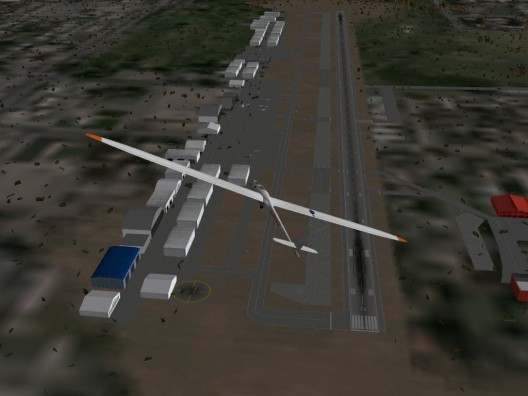The Cafe Foundation’s Green Flight Challenge, scheduled for 2011, has drawn some impressive competitors with its $1.5 million prize. Two of these, Greg Cole of Windward Performance, who will field a two-seat motorglider, and Einar Enevoldson, leader of the PC-Aero team, which will launch its Elektra One (see “PC-Aero’s Elektra One,” April 11, 2010), are working together quite collegially on a challenge of their own.
Before his death in 2007, adventurer Steve Fossett, with co-pilot Enevoldson, had set the sailplane world altitude record in Perlan I, a modified Glaser-Dirks DG-500. In a continuation of that ambitious adventure, Einar, Greg, and Project Manager Morgan Sandercock are creating Perlan II, a pressurized sailplane that will explore the realm of the nacreous, or ‘mother of pearl” cloud (“perlan” is Icelandic for “pearl”), a shimmery mix of water vapor and other exotic chemicals in the polar vortex at 50,000 to 90,000 feet. Their flight will not only set a world’s sailplane altitude record, but provide a platform for carrying scientific instruments and experiments into the stratosphere. Because of Cole’s skills and demonstrated successes, Morgan and Einar chose Greg’s company, Windward Performance, to build the record sailplane. The Project and Windward remain separate entities, but have a common purpose in the Perlan.
Einar provides the high-altitude experience, having flown the SR-71 Blackbird, the Grob Strato 2C, and several other testbed aircraft into the upper atmosphere. Greg, provides his design expertise, evidenced on Lancair and Columbia aircraft, and on his own Sparrowhawk ultralight sailplane, a 36-foot span, 155 pound empty weight marvel that holds its own in contests with larger birds. His Goshawk two-seater relies for its performance on Greg’s experience with light carbon-fiber structures, and with its HKS-700 engine, will weigh only 460 pounds empty and 800 with fuel and two passengers. Greg projects its fuel burn at 100 mph to be 0.67 gallons per hour, giving the Goshawk 150 miles per gallon, or 300 seat miles per gallon, topping the GFC’s 200 seat mile per gallon goal. He confides that he doesn’t think a single seater can win the GFC.

Simulated Perlan 2 over the Bend, OR airport, where the real sailplane is being built in the blue hangar
The light weight and clean design crucial to great fuel economy are even more important in the design of sailplanes, which have only thermal and atmospheric energy to give them lift. If Greg and Einar are successful in the construction of their 84-foot Perlan II, its specialized design will allow them to reach 90,000 feet and to maneuver in the middle stratosphere. This is an important realm, because the polar vortexes ringing the north and south poles have clues to global climate change, ozone depletion, and large-scale stratospheric turbulence of importance not only to future high altitude aircraft but also to global weather prediction. The scientific and educational aspects of this project allow it to obtain a 501.3c status, with hope being that these efforts will educate and inspire future aerodynamicists and climate scientists. The charitable listing also allows donors tax deductions for contributions to the program, which will require around $2.5 million to complete and campaign the airplane.
Whether exploring the high reaches of near space, or scooting around the GFC course above Santa Rosa, California, Greg Cole and Einar Enevoldson will continue to educate and inspire in their own right.

Comments 1
For more information about the Perlan Project please visit the following sites:
http://www.perlanproject.com
http://www.facebook.com/perlanproject
http://twitter.com/perlanproject